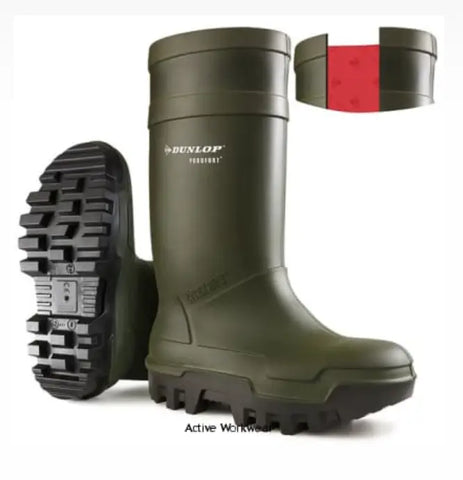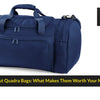How to Choose the Perfect Pair of Wellington Boots: The Ultimate Guide
- by Mike Johnson
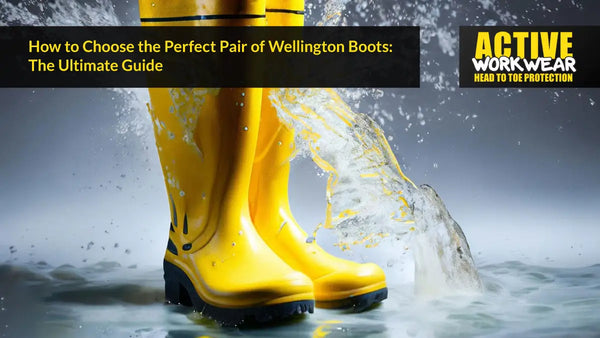
How to Choose the Perfect Pair of Wellington Boots: The Ultimate Guide
In the realm of outdoor footwear, Wellington boots have carved a niche for themselves. Their practicality, versatility and comfort make them an indispensable part of any outdoor enthusiast's wardrobe. Whether you're a gardener, a farmer, a dog walker, or a festival-goer, these boots are a reliable companion. This guide will help you navigate through the world of Wellington boots, ensuring that you find the perfect pair that best suits your needs and preferences.
The Evolution of Wellington Boots
The humble Wellington boot has its roots in the early 19th century. Originally designed for Arthur Wellesley, the 1st Duke of Wellington, they were intended to be a practical and comfortable alternative to the stiff, knee-high riding boots of the time. Since then, the Wellington boot has undergone several transformations, adapting to the changing needs of its users.
Today, Wellington boots are no longer just simple rubber boots for keeping your feet dry in wet weather. They've evolved to become fashion accessories, walking companions, and even safety gear. Wellington boots now come in a variety of designs, materials, and colours, offering something for everyone.
Understanding Your Needs: The Occasions for Wearing Wellington Boots
Before you set out to buy Wellington boots, it's crucial to identify the primary purpose for which you'll be using them. Different activities demand different features in a boot. Here's a list of common occasions when Wellington boots are worn, along with some considerations to keep in mind for each.
Gardening
When you're gardening, you need boots that can protect your feet from sharp objects like thorns and rocks. Boots made of natural rubber or cheaper PVC are ideal for this purpose. Also, look for boots with flexible soles and gussets. This flexibility is necessary as gardening often involves bending or crouching, and you don't want the boots to resist these movements.
If you're a casual gardener who only tends to your garden occasionally, short boots may suffice. However, if you spend a significant amount of time gardening, invest in a quality pair of tall boots made of natural rubber. These boots offer the necessary flexibility, support, and protection.
Walking the Dog
The type of boots you need for dog walking depends on your dog's activity level. If you have a highly active dog that requires long walks, consider buying Wellington boots designed specifically for walking. On the other hand, if you have a small house dog, you might only need short ankle boots that you can wear quickly for a quick jaunt in the garden.
Farming and Yard Work
Farmers and those involved in yard work need boots that offer comfort and quality. Since these jobs involve long periods of performing a variety of tasks, aesthetics are less important than functionality. Consider boots with added protection like steel toe caps, which can protect your feet from heavy objects. Brands like Dunlop and Blaklader offer a selection of high-quality safety boots ideal for farm and yard work.
Festivals
When buying wellies for festivals, people often make the mistake of opting for the cheapest and most colourful wellies they can find. However, cheap wellies usually lack support or cushioning, which can lead to sore feet after only a few hours of wearing them. Consider your festival wellies as an investment that you can use for future festivals. If your budget allows, go for wellies made from natural rubber, which are more comfortable than cheaper PVC boots.
Fishing
Anglers often walk long distances to find the best spots on rivers and lakes, requiring a good pair of Wellington boots that are suitable for walking. Also, standing in and beside the water can rapidly make feet feel very cold, so insulated wellies are a must. The soles of the boots should be thick to insulate feet from cold surfaces and have good grips to prevent slipping and falling.
Fashion
Over the past few decades, wellies have evolved from the traditional green or black boots worn by country folk to stylish footwear that can be worn by anyone. Fashionable wellies come in a vast range of colours and designs, but they usually lack the same quality as 'working' boots.
Hiking and Long Walks
Wellington boots might not be the first type of footwear that comes to mind for hiking or long walks, but some wellies are designed just for that purpose. If you're going to buy wellies for walking, make sure they're made from natural rubber, which provides excellent support and flexibility. Also, the tread on the wellies should be deep and evenly spaced to provide good grip in all types of weather conditions.
The Best-Selling Wellington Boots
DUNLOP ACIFORT WARWICK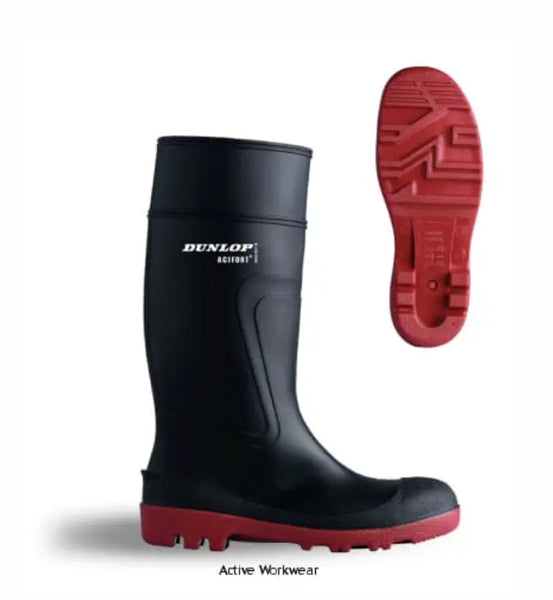
Introducing the Dunlop Acifort Warwick H812511, an S5 Wellington Boot featuring Full Safety qualities, equipped with a Steel Toe Cap and Midsole; Model D8864.
• Offers comprehensive safety features in Acifort design.
• Sculpted from a blend of PVC/Nitrile Rubber.
• Reinforced with a steel toe cap for added protection.
• Enhanced with midsole reinforcement.
• The outsole is built to resist oil.
• Guarantees 100% waterproof performance.
• Passes EN ISO 20345 SB P FO SRA Safety Standards.
PORTWEST SAFETY WELLINGTON BOOT STEEL TOE
Portwest Safety Wellington boots are meticulously crafted from premium PVC/Nitrile in a seamless, watertight structure. The boots feature a robust 200 joule steel toecap, a slip-resistant outsole, antistatic properties, a washable nylon inner layer, and kick-off spurs. These boots are perfect for a wide range of working environments and sectors.
Key Features
- CE Certification ensures adherence to safety standards.
- Comes with a sturdy steel toecap for enhanced protection.
- Specially designed anti-static footwear.
- Comes with an Energy Absorbing Seat Region for user comfort.
- Promises 100% waterproofing to keep your feet dry.
- It has SRC-standard slip-resistant outsoles to prevent slips on both ceramic and steel surfaces.
- The outsole is resistant to fuel and oil.
- Made with dual-density PVC/Nitrile construction for durability.
- The boots come with a washable nylon inner lining.
- Compliant with EN ISO 20345: 2011 S4 and EN 13832-3: 2018 Standards.
Materials
Boot Upper: Crafted from PVC/Nitrile
Sole: Constructed from PVC/Nitrile
BLAKLADER SAFETY RUBBER WELLINGTON BOOT
Introducing a practical safety Wellington boot, fortified with a steel toecap and a midsole also made of steel. This boot stands out for its customisable height – it can be cut to your preferred level with convenient marking at three levels. The boot complies with EN ISO 20345 and is classified as S5 SRA for safety.
Primary Attributes: EN ISO 20345:2011
SOLES:
The external sole is crafted from PVC
SAFETY:
Constructed with robust steel
Includes steel penetration protection
FUNCTIONALITY:
Designed with antistatic properties
MATERIAL:
The upper part of the boot is PVC made
SECURITY CLASS:
Rated S5 SRA
LINING:
The boot comes unlined
FIT:
Tailored to ensure a medium fit
WEIGHT:
The boot weighs 1182 g
SHAFT HEIGHT:
The shaft of the boot measures 39 cm.
DUNLOP PUROFORT THERMO PLUS
Experience the Dunlop Purofort Thermo+ Full Safety Wellington Boot, Certified to handle frosty up to -50°C conditions
Experience the Dunlop Purofort Thermo+ Full Safety Wellington Boot, Certified to handle frosty up to -50°C conditions

The Purofort Thermo+ stands as the ideal choice for working conditions in cold environments. A prominent safety feature includes a steel-enforced toe cap. The boot is well equipped to safeguard workers in situations subject to temperatures as low as -50°C. The heat-preserving sole ensures comfortable wear while the shock-absorbent technology, combined with a flexible upper sole, allows free movement.
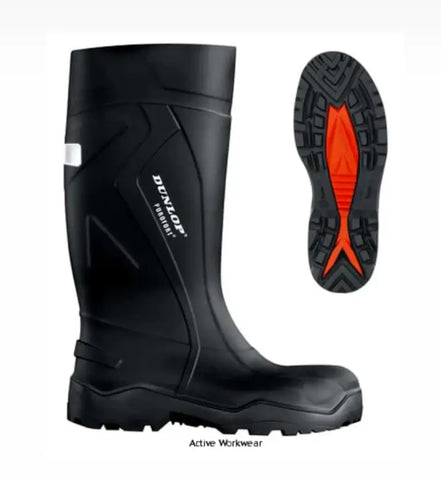
Dunlop Purofort boots are engineered to be up to 35% lighter than PVC, rubber, or any rival PU boots in the market. The material of choice is filled with millions of tiny air pockets that do not compromise strength but considerably reduce the weight of the boots. No more heavy boots or weary feet!
PERFECT FIT with DUNLOP PUROFORT BOOTS
Two factors contribute to the perfect fitting of Dunlop boots. Purofort material is more flexible and thinner than rubber, allowing for a more comfortable fit. Coupled with Dunlop's century-long expertise in designing boot lasts, these boots fit perfectly around your feet and ankles.
THERMAL INSULATION for COMFORT
Like a thermos flask, Purofort effectively prevents heat loss and provides thermal insulation as low as -20°C and even up to -50°C. The air bubbles trapped in the Purofort material work as an insulating layer, keeping your feet at a constant temperature. Traditional rubber boots, being a solid material, transfer heat and cold directly to your feet, causing discomfort. With Purofort, bid farewell to chilly feet!
Key Features:
- Strong steel toe cap
- Offers midsole protection
- Energy-absorbing sole
- Antistatic properties
- 100% Waterproof
- Oil Resistant outsole
- Slip-resistant for added safety
- Thermal insulation for extreme cold
- Resistant to minerals, animal and plant oils and fats, disinfectants, fertilisers, solvents, and various chemicals.
- Standard Compliance: EN ISO 20345:2011.S5.CI.SRC
The Purofort Thermoplus is the ideal Wellington boot for use in cold environments.
Dunlop has improved its Purofort Agri Range:
1. Lining; ant bacterially treated, recognisable Dunlop red
2. Improved insole; premium, 3x better moisture absorption, 100% better energy absorption
In addition, the communication on the boot and the Dunlop pair box has been improved. The Dunlop® Purofort® Thermo+ is certified according to the most recent European standards.
Key Features:
-Toecap protection
-Midsole protection
-Energy-absorbing sole
-Antistatic
-100% Waterproof
-Oil Resistant outsole
-Slip-resistant
-Cold insulating
-Resists minerals, animal and plant oils and fats, disinfectants, fertilisers, solvents, and various chemicals.
The Importance of Safety Features in Wellington Boots
Safety should be a top priority when choosing Wellington boots, especially if you're using them for work-related activities. Some Wellington boots come with safety features, like steel toe caps and anti-penetration steel midsoles, to protect your feet from hazards.
The Dunlop Acifort HazGuard Safety Wellington Boot offers certified chemical resistance and worker protection. The boots are tested and certified for slip resistance on ceramic tile floors covered with a dilute soap solution. The outsole is also resistant against oil, and the wellies offer protection against a wide variety of chemicals.
Tall Adjustable Wellington Boots: A Flexible Fit for All
Tall Wellington boots with adjustable features are perfect for those with wide or narrow calves. Most adjustable wellies come with an expandable gusset at the back or side that can be adjusted to suit your needs. Designed for a flexible fit, tall wellington boots can be used for fishing, hunting or working as well as other casual outdoor activities such as walking the dog, playing outdoors, and going on short walks.
In Conclusion
Choosing the perfect pair of Wellington boots is not a decision to be taken lightly. It is essential to consider the intended use of the boots, your personal style, and your comfort. Remember, the best Wellington boots are those that meet your specific needs and preferences. So take your time, do your research, and find the perfect pair that will serve you well for years to come.
Frequently asked questions about Wellington Boots
What is the function of wellington boots?
Wellington boots, also known as rain boots or rubber boots, are designed to protect the feet from wet and muddy conditions. They are waterproof, making them ideal for walking in rain or snow, gardening in wet soil, working in wet environments, or doing outdoor activities like fishing and hunting. The boots are usually knee-high and made of rubber or a similar material, providing a barrier that keeps water and mud away from the feet and lower legs. They also typically have a grippy sole to help prevent slipping on wet surfaces.
What's the difference between wellies and wellington boots?
There is no difference between "wellies" and "Wellington boots". "Wellies" is just an informal, shortened term commonly used in the UK and other Commonwealth countries to refer to Wellington boots. The boots are named after the Duke of Wellington, who popularised this style of footwear.
When can you wear wellington boots?
Wellington boots can be worn whenever you need to keep your feet dry and protected. Here are some common situations:
1. Rainy weather: They are waterproof, making them perfect for walking or working during rainy days.
2. Snow: Wellington boots can be useful in snowy conditions, especially if they're lined for extra warmth.
3. Gardening: They provide protection from mud and wet ground, so many people wear them while gardening, especially in rainy or early spring conditions.
4. Outdoor work: If you work in an environment where there's a lot of mud, water, or muck (like farming or construction), wellington boots can be crucial.
5. Festivals: They are commonly worn at outdoor music festivals, particularly in the UK, where the weather can be unpredictable and the ground can get very muddy.
6. Fishing or Hunting: Wellington boots are often used in water or muddy areas for fishing or hunting activities.
Remember, while Wellington boots are often associated with practical uses, they've also become part of everyday casual and even fashion wear, coming in a variety of colours, patterns, and designs. So, you might see people wearing them just because they like the style.
Are wellington boots comfortable?
Comfort in Wellington boots can greatly depend on the specific brand, design, and size of the boot, as well as the individual's foot shape and personal preferences.
Generally, Wellington boots are not designed with the same level of support or cushioning that you would find in a shoe designed for walking or sports. They are primarily designed for waterproofing and protecting the foot, and traditionally were not intended for long periods of wear.
However, many modern brands of Wellington boots have started to incorporate more comfort features, such as cushioned insoles, arch support, or wider calf fittings. Some people find these boots to be very comfortable, while others may find they need to add their own insole for additional support. It should also be noted that wearing the correct size and pairing with a good set of thick socks can add to the comfort of the boots.
So, while they may not be the most comfortable footwear for long walks or standing all day compared to specially-designed footwear, Wellington boots can still provide a decent level of comfort for general use, especially in wet or muddy conditions.
Are wellington boots waterproof?
Yes, one of the key characteristics of Wellington boots is that they are indeed waterproof. They are typically made from rubber, PVC, or other water-resistant materials which prevent water from entering the boot, keeping your feet dry. This feature makes them especially useful in wet or muddy conditions, such as rain, snow, wet grass, or muddy fields. It's important to note, however, that while the boots themselves are waterproof, water can still enter from the top opening if it is not appropriately covered.
Are wellington boots good for work?
Whether Wellington boots are good for work can largely depend on the type of work you do. If your work involves outdoor elements or conditions where there is a lot of water, mud, or muck, such as farming, construction, gardening, or fishing, then Wellington boots can be incredibly beneficial.
They offer waterproof protection and often have sturdy, grippy soles for help in slippery conditions.
However, because traditional Wellington boots may lack the necessary comfort and support for long periods of standing or walking, if your work involves these activities you might want to look for Wellington boots designed specifically for work. These boots often have features such as reinforced toes, better arch support, cushioned insoles, wider calf fittings, or liners for warmth.
In jobs where safety is a concern, such as construction or other heavy industries, you may need to use safety Wellingtons. These are reinforced with protective features like steel toe caps or midsole protection.
But, if you work in a more traditional office environment or a role that doesn't involve wet or outdoor conditions, other types of footwear might be more appropriate and comfortable.
So overall, while Wellington boots can be a good choice for some types of work, they may not be suitable for all working conditions.

